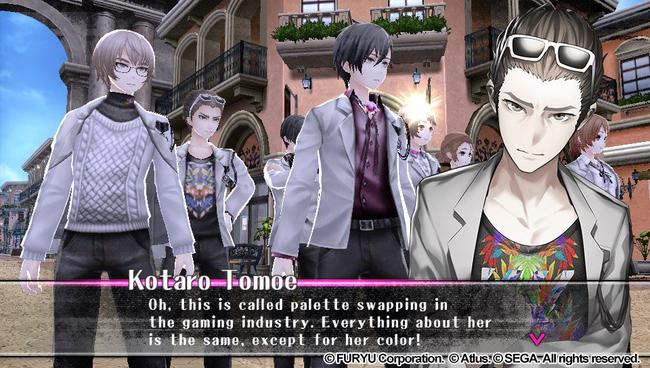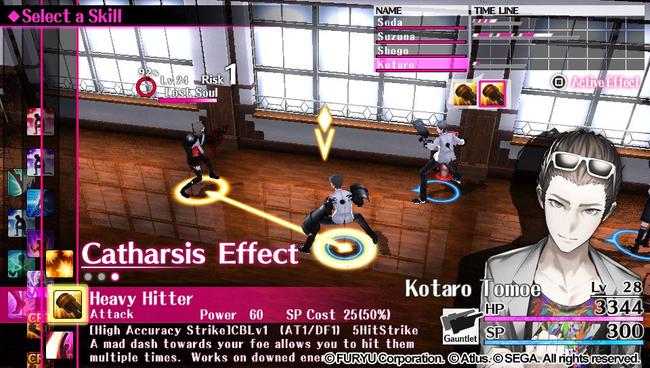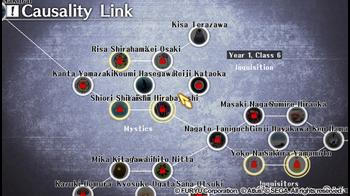
The Caligula Effect Review
Having entered its sixth year on the market, you don't often see true PlayStation Vita RPG exclusives getting released these days. Japanese developers are still making Vita titles, but they are often also released on PlayStation 4 or PC - at least when brought overseas.
The Caligula Effect is a rare Vita exclusive in 2017, developed by Aquria and localized by Atlus USA. One of the first selling points announced for Caligula is that Tadashi Satomi - writer of both Persona 2: Innocent Sin and Persona 2: Eternal Punishment - is on board to write the scenario for this new game. Let me get it out of the way early, Caligula doesn't come anywhere close to being as interesting as Satomi's earlier works.
The Caligula Effect is set in a fake alternate world known as Mobius, created by a virtual idol named Miu (as in the greek letter). Here, the populace lives out a life as eternal Japanese teenagers in an ideal high school, no matter how old these people were in the real world. The main cast, however, begins to realize the truth to their situation and team up to create the Go Home Club, whose mission is to find their way back to reality.

The plot is organized into chapters, where each chapter features a new dungeon and boss musician. These villains are often tied to one of your party members and gives them a little focus. Each dungeon also features a vocal track performed by various Japanese musical groups. Honestly, the music is probably the most interesting element the game has to offer.
Concisely, the overarching plot is very bland and expected. Antagonists have unsurprising reasons why they want to stay in Mobius - they were unpopular in the real world, or unsuccessful, or upset about their weight, or bullied. The party members also have similar hardships they must face in the real world, but being the protagonists, they decide to go back to face their problems head-on instead of avoiding them entirely. It's a fine idea in concept, but the execution throughout the game feels very by-the-numbers, only giving a surface-level exploration of the characters and the issues they have in their life.
Each chapter's flow is also quite similar to one another, so things ultimately feel repetitive most of the way through the game.
As for the type of game The Caligula Effect is, it's probably best described as a third-person dungeon crawler. You navigate labyrinths to various checkpoints and progress the story. In these maze-like paths, you can encounter both NPC characters that you can befriend (more on that later) as well as tainted NPCs known as Digiheads - the main enemies in the game.
There are about six different types of Digiheads commonly encountered throughout the game. Some are equipped with a giant blade, some with a giant shield, some with a cannon, and so on. Despite slightly different movesets for the various enemy types, you can approach combat to most enemies in the same way.

The battle system is a mix between a typical turn-based affair and real-time combat. During a character turn, you can select up to three actions for them to perform - whether it's moving their position, an attack skill, or a supporting ability. Where Caligula finds a unique take is how, once you selected your abilities, you can see a preview of how the action will play out. Players get to see the enemy response along with current actions from other characters; you can even adjust the timing to achieve the best combos.
Sometimes you might want to launch an enemy into the air in order to prevent them from performing actions of their own, so you also want to be sure your character attacks are timed properly to actually hit the target.
Or at least, that seems to be the idea behind this combo/timing system. I found that it simply took too long to meticulously line up all my attacks for each encounter in the game. So, usually, I just rushed enemies and attacked as quickly as I could... it was effective enough 95% of the time. When it's almost preferable to ignore most of the designed intricacies of a game's combat system, there might be reason to reevaluate those systems to begin with.
Besides combat, one of the first gameplay mechanics encountered is the Causality Link. This is a NPC relationship system where most of the game's 500 NPCs can be chatted with in order to increase a bond which can unlock new passive skills to use in battle. At the game's onset, I was greeted with a massive chart that looks something like a Sphere Grid, where each NPC and their relationships are shown as an interconnected web. In order to befriend certain NPCs, sometimes you have to chat up their linked buddies first before you get a chance to know them. Quite frankly, it felt overwhelming at first.
You can raise the relationships in one of two ways. You can meet them in person, wandering around the various locations/dungeons in the game, or you can text them via an in-game messaging app. The more you chat, the more the relationship increases.
You can't raise characters to max all in one go, however. Sometimes you'll need to wait some time before they feel like speaking with you again. Most NPCs also have a Trauma episode, which requires the player to talk to some other character, defeat a monster, or collect something in order to continue befriending said NPC.
I'll be honest, this subsystem is one of the most mundane and tedious that I've ever experienced. None of the 500 NPCs actually have anything interesting to say as they just repeated the same small-talk over 500 different students you can talk to. Worst of all, it simply takes forever if you decide to bother with it. So I made the decision to ignore this sub-system entirely. You can essentially forget the last four paragraphs I wrote in the review because the whole mechanic basically amounts to nothing.
Most notably, ignoring Causality Link will barely hinder you during combat, if it does at all. You get plenty of equipment the bolster your stats anyway, and not once did missing some passive skills seem to slow me down.
There is also a skill unlock system where the player can spend points earned during level ups to gain new combat abilities. I wasn't planning on this when I started playing, but with the exception of one remedy skill for my healer (think Esuna from Final Fantasy), I never bothered to get new skills. I was perfectly comfortable with the starting skills given to my characters and played through the final boss with hardly any issues. I wasn't trying to handicap myself, I simply never saw the need to try anything else.
Finally, it's probably no surprise that The Caligula Effect includes a system reminiscent of a 'Social Link' from the Persona series. Each of the game's party members has a 'Character Episode' which the player can initiate as they progress through the story. These episodes are essentially dialogues that describe that party member's past, who they are in the real world, and some of the hardships they have to return to once they leave Mobius.
As I mentioned at the top of the review, these character dramas are simply not especially unique or compelling. While the overall concept is solid and with the exception of one mildly interesting story (Kotono), most of the Character Episodes end up being cookie-cutter dramatics, with a couple of others being too strange to be impactful and believable. It's also worth mentioning that these Episodes don't actually reward you with anything in the game - no skill or passive ability - nothing. They seem to only be in place to flesh out characters, which is not much of a reward considering how typical most of them feel.
It's a shame because the localization effort from Atlus USA is mostly done well here. There were a couple lines that read a bit oddly, but it's a bit hard to tell because it seems the source material falls flat to begin with.
Another thing that is immediately apparent upon starting The Caligula Effect is that it does not perform well on the hardware. Framerate drops are common in most areas of the game, with long load times between areas (about 20 seconds), and other issues like characters popping in after areas have loaded. The presentation also suffers due to robotic character models and samey looking hallways throughout most of the game's dungeons.
The Caligula Effect is a functional game, and some of the Japanse vocal music is fun to listen to. But it's actually difficult for me to give praise to much else the game has to offer. It's a diluted experience on a potentially interesting concept with some gameplay mechanics that are better off ignored. I can only recommend this to diehard Vita fans who are simply curious about the game, regardless of quality. Otherwise, this one is easily skipped.

